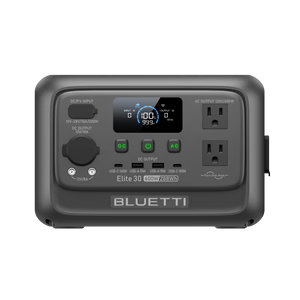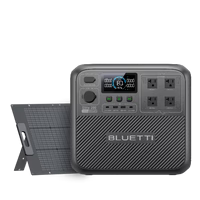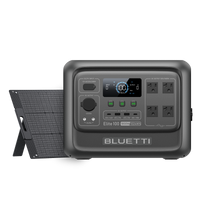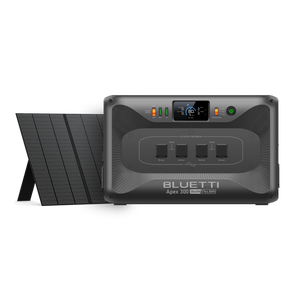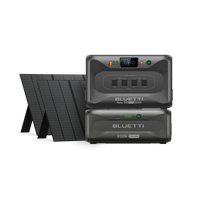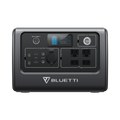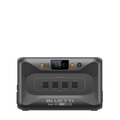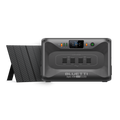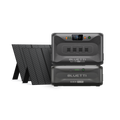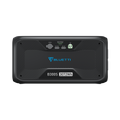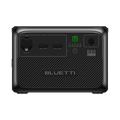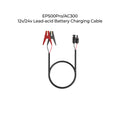Nous vivons dans un monde d'accès instantané à l'information et au divertissement. Que vous souhaitiez vous informer en allant au bureau, regarder un film en rentrant ou simplement discuter avec un ami à l'autre bout du monde, nos appareils portables sont toujours là, nous connectant au monde. Mais une chose peut gâcher cette expérience : une batterie faible. Personne n'aime voir son écran clignoter, surtout au moment où on en a le plus besoin. C'est pourquoi il est si important de comprendre le fonctionnement des batteries et de choisir celle qui répond parfaitement à nos besoins.
C'est le sujet de notre article : la capacité des batteries, facteur clé pour déterminer l'autonomie d'une batterie. Nous découvrirons également comment la capacité d'une batterie est exprimée en mAh, comment elle est affectée par différents facteurs et, enfin, comment comparer différentes batteries selon leur capacité.
Quelle est la capacité de la batterie ?
Considérez la batterie comme un réservoir d'énergie en veille pour alimenter votre appareil. Sa taille, c'est-à-dire la quantité d'énergie qu'elle peut stocker et restituer, est essentiellement définie par la capacité de la batterie, basée sur la composition chimique, la taille et la conception des cellules.
La capacité d'une batterie est généralement exprimée en ampères-heures (Ah), watt-heures (Wh) ou kilowatt-heures (kWh), respectivement, selon l'échelle prévue et son application. Les ampères-heures, quant à eux, représentent la quantité de courant qu'une batterie peut fournir sur une période donnée. Les watts-heures et les kilowatt-heures, quant à eux, représentent la quantité d'énergie qu'une batterie peut fournir sur une période donnée.
Fondamentalement, plus la capacité est grande, plus elle stocke d’énergie.
Facteurs affectant la capacité d'une batterie
Les batteries sont des héroïnes silencieuses qui alimentent nos nombreux appareils électroniques, des plus petits aux plus grands systèmes. Ainsi, les facteurs déterminant la capacité, c'est-à-dire la quantité d'énergie qu'elles peuvent stocker et restituer, incluent la forme, la taille, la composition chimique, la tension et la capacité de recharge. Deux paramètres importants influent sur la capacité d'une batterie : le nombre et la taille des plaques des cellules, ainsi que la densité de l'électrolyte.
Le nombre et la taille des plaques d'une cellule de batterie sont liés à la quantité et aux dimensions des électrodes qui stockent et libèrent l'énergie électrique. En effet, plus il y a de plaques et plus elles sont grandes, plus la surface de stockage de l'énergie est importante, ce qui se traduit par une capacité et une durée de vie accrues de la batterie. L'épaisseur et la forme des plaques influencent également la capacité et l'efficacité de la batterie.
La densité de l'électrolyte dans une batterie désigne la concentration ou la densité du liquide ou du gel qui participe aux réactions chimiques et produit de l'électricité. Plus la densité de l'électrolyte est élevée, plus la capacité et la puissance délivrée sont importantes. Cependant, cela entraîne une usure plus importante des électrodes et réduit ainsi la durée de vie de la batterie. En revanche, une faible densité de l'électrolyte prolonge la durée de vie de la batterie, mais diminue sa capacité et sa puissance délivrée.

Qu'est-ce que mAh ?
Imaginez : vous disposez d'un seau d'eau pour arroser vos plantes. Sa capacité correspond à la capacité en mAh d'une batterie. Elle indique la quantité d'eau que vous pouvez stocker et utiliser. Un milliampère-heure correspond à un milliampère pendant une heure, soit la quantité d'énergie électrique qu'une batterie peut fournir.
Ensuite, la capacité de quelqu'un à drainer un milliampère (une minuscule gouttelette) pendant une heure d'affilée avant que le seau ne soit vide.Par exemple, un « seau » de 10 000 mAh de charge est capable de fournir 10 ampères (une grosse éclaboussure) de courant pendant une heure ou 5 ampères (une éclaboussure moyenne) pendant deux heures ou 1 ampère (une petite éclaboussure) pendant 10 heures, et ainsi de suite.
Plus le seau est grand (mAh), plus vous pouvez stocker et utiliser d'eau (énergie). Mais tout ne se résume pas aux mAh ; la taille des plantes, la météo et le tuyau d'arrosage sont tout aussi importants. De même, le type d'appareil, l'utilisation et le chargeur influencent également l'autonomie de la batterie.
Comment le mAh affecte-t-il la durée de vie de la batterie ?
La longévité de nos appareils joue un rôle important dans nos expériences numériques, affectant à la fois notre efficacité et notre confort. Il est donc essentiel de comprendre la valeur des milliampères-heures (mAh) pour déterminer l'autonomie d'une batterie.
Le mAh est une unité de mesure de la charge électrique pouvant être stockée et délivrée. Une batterie d'une capacité de mAh plus élevée est capable de stocker davantage de charge, permettant ainsi à l'appareil de fonctionner plus longtemps.
Cela a également un impact sur le temps de charge d'un appareil. Une valeur mAh élevée signifie un temps de charge plus long, car davantage d'énergie électrique doit être stockée. À l'inverse, une valeur mAh plus faible entraîne un temps de charge plus court, car la quantité d'énergie électrique stockée est moindre.
Cependant, il faut tenir compte du fait que le temps de charge dépend non seulement de la capacité en mAh, mais aussi d'autres facteurs, comme la technique de charge, la qualité du câble et l'utilisation de l'appareil pendant la charge. Par exemple, un appareil avec une faible capacité en mAh peut voir sa batterie surchauffer, ce qui peut réduire son autonomie si l'appareil est utilisé avec un adaptateur de charge rapide.
La capacité en mAh dépend essentiellement du type et de la taille de la batterie, ainsi que de l'appareil qui l'utilise. Par exemple, une batterie externe d'une capacité suffisante devrait être d'environ 12 000 mAh, tandis que celle d'un smartphone offrant une bonne autonomie devrait dépasser 4 500 mAh. Les tablettes et les ordinateurs portables ont généralement des batteries d'environ 8 000 mAh.
Un appareil avec une capacité en mAh plus élevée implique une autonomie plus longue, mais aussi un temps de charge plus long. Pour la plupart des smartphones, notamment pour jouer, regarder des vidéos et autres utilisations intensives, l'autonomie varie de 3 à 5 heures avec une batterie de 3 000 mAh, de plus de 5 heures avec une batterie de 4 000 mAh, et même plus pour une capacité supérieure, comme 5 000 mAh. Cependant, plus la capacité en mAh est élevée, plus le temps de charge est long.
Si votre gadget doit survivre à la capacité de la batterie, vous pouvez utiliser une batterie de station d'alimentation telle que :
BLUETTI AC300+B300

Premier de la gamme, nous présentons fièrement le dernier pack, l'AC300+B300, Doté d'un onduleur sinusoïdal pur de 3 000 W, il offre une puissance de pointe allant jusqu'à 6 000 W, couplée à une remarquable batterie LiFePO₄ longue durée de 3 072 Wh. La capacité du système B300 est extensible jusqu'à quatre modules B300, pour un total maximal de 12 288 Wh.
Il prend en charge une liaison de phase divisée de 240 V et offre une alimentation de secours domestique 24h/24 et 7j/7. L'AC300+B300 peut être rechargé de sept manières différentes : solaire, CA, voiture, générateur, batterie plomb-acide, double CA et CA+solaire. Enfin, il offre une puissance solaire maximale de 2 400 W et une capacité de charge rapide double de 5 400 W maximum.
BLUETTI EP500Pro
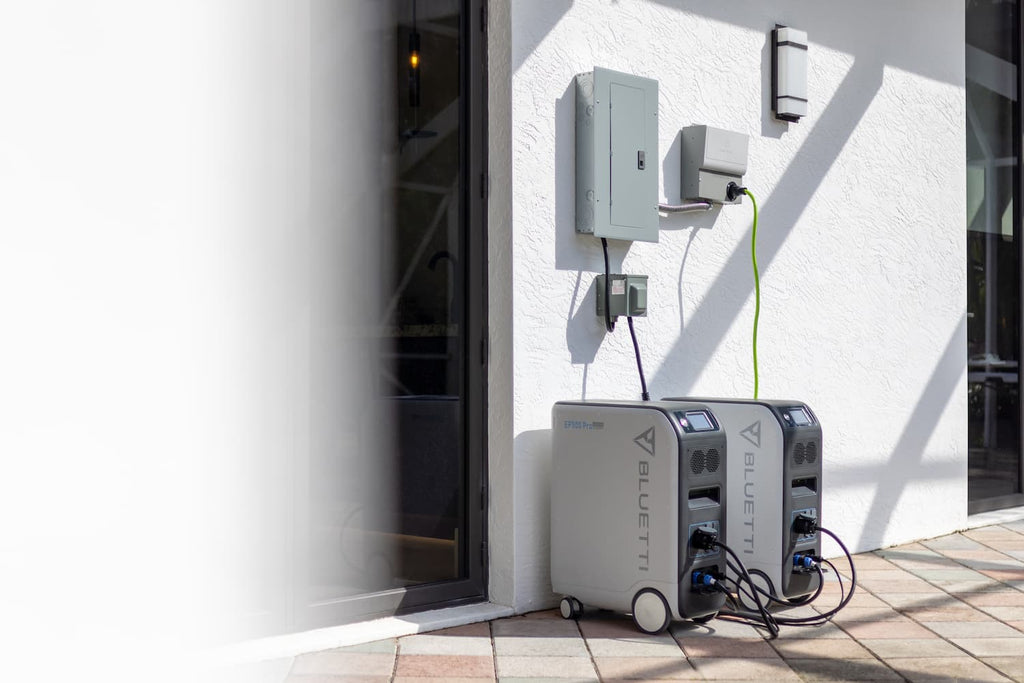
Il s'agit d'une centrale solaire, de plus portable, conçue pour fournir une énergie fiable et respectueuse de l'environnement pour votre maison.Doté d'une batterie LiFePO4 de 5 120 Wh avec une autonomie de plus de 3 500 cycles, il offre une puissance sinusoïdale pure de 3 000 W pour alimenter simultanément plusieurs appareils. Il fonctionne comme un onduleur connecté au réseau, comme un système de stockage d'énergie hors réseau et prend en charge des modes d'alimentation polyvalents et 7 x 24. L'EP500Pro peut être rechargé de différentes manières : solaire, secteur, voiture, générateur et batterie plomb-acide. Il est également doté d'un écran tactile intelligent et d'une application de contrôle à distance pour une utilisation et une surveillance simplifiées.
BLUETTI AC200MAX

Cet onduleur de secours polyvalent et extensible délivre jusqu'à 2 200 W de puissance sinusoïdale pure et 4 800 W de puissance de pointe. Il est équipé d'une batterie LiFePO4 de 2 048 Wh, garantissant plus de 3 500 cycles de vie, et peut être équipé de deux modules B230 ou B300 pour un stockage supplémentaire de 8 192 Wh. Les modes de recharge possibles sont : secteur, solaire, voiture, générateur, batterie au plomb, double secteur et secteur + solaire, soit sept modes de recharge pour l'AC200MAX. Il dispose également d'une entrée solaire maximale de 900 W et d'une double charge rapide de 1 400 W maximum.
Choisir la bonne batterie pour votre appareil
Tenez compte de vos habitudes d'utilisation et de votre budget, ainsi que de la capacité (mAh), de la tension, de la température de fonctionnement, de la taille et de la forme de la batterie, ainsi que de sa composition chimique (plomb-acide, nickel ou lithium). Chacune présente ses avantages et ses inconvénients ; faites donc votre choix en fonction de vos besoins. Enfin, suivez les instructions de stockage et d'utilisation pour prolonger la durée de vie de la batterie.
Réflexions finales
La capacité d'une batterie est un facteur crucial pour une utilisation et un achat judicieux. Face à la multitude d'appareils et à la diversité des types de batteries qui les alimentent, il est essentiel de bien la mesurer et de prêter attention à sa capacité. L'autonomie de l'appareil avant toute recharge dépend donc de sa capacité, tandis que la connaissance des techniques de charge et de décharge appropriées contribue à prolonger sa durée de vie. Respecter ces règles vous permettra de choisir la batterie idéale pour vos appareils et de garantir leur efficacité et leur fiabilité.
